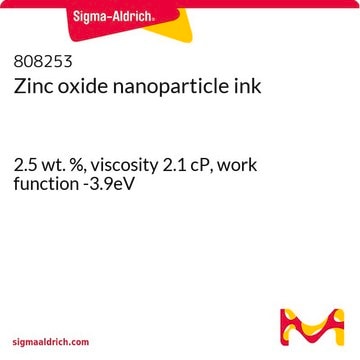Recommended Products
Application
The folate end group may be used for target-specific cellular uptake of drug delivery vehicles and the carboxylate group can be used for further conjugation to make drug conjugates, polymeric nanoparticles, or folate targeting liposomes.
Legal Information
Product of JenKem Technology.
Storage Class
11 - Combustible Solids
wgk_germany
WGK 3
flash_point_f
Not applicable
flash_point_c
Not applicable
Certificates of Analysis (COA)
Search for Certificates of Analysis (COA) by entering the products Lot/Batch Number. Lot and Batch Numbers can be found on a product’s label following the words ‘Lot’ or ‘Batch’.
Already Own This Product?
Find documentation for the products that you have recently purchased in the Document Library.
Sun Hwa Kim et al.
Langmuir : the ACS journal of surfaces and colloids, 21(19), 8852-8857 (2005-09-07)
Poly(D,L-lactic-co-glycolic acid) (PLGA) nanoparticles with anionic surface charge were surface coated with cationic di-block copolymer, poly(L-lysine)-poly(ethylene glycol)-folate (PLL-PEG-FOL) conjugate, for enhancing their site-specific intracellular delivery against folate receptor overexpressing cancer cells. The PLGA nanoparticles coated with the conjugate were characterized
Hyuk Sang Yoo et al.
Journal of controlled release : official journal of the Controlled Release Society, 100(2), 247-256 (2004-11-17)
For folate-receptor-targeted anti-cancer therapy, doxorubicin aggregates in a nano-scale size were produced employing doxorubicin-polyethylene glycol-folate (DOX-PEG-FOL) conjugate. Doxorubicin and folate were respectively conjugated to alpha- and omega-terminal end group of a PEG chain. The conjugates assisted to form doxorubicin nano-aggregates
Da-Wen Dong et al.
Biomaterials, 34(20), 4849-4859 (2013-04-02)
A nanocarrier delivery system that can simultaneously deliver a chemotherapeutic drug and siRNA to the tumor is emerging as a promising treatment strategy for cancer treatment. In this study, a multifunctional PHD/PPF/siRNA complexes was developed by one-step assembly of prefunctionalized
Dipanjan Pan et al.
Chemical communications (Cambridge, England), (19)(19), 2400-2401 (2003-11-01)
Shell cross-linked nanoparticles (SCKs) constitute a unique class of materials with amphiphilic core-shell morphology; SCKs are characterised by their structural integrity and available functionality to attach receptor-recognising or receptor-specific ligands on the shell surface and, therefore, hold great potential in
Our team of scientists has experience in all areas of research including Life Science, Material Science, Chemical Synthesis, Chromatography, Analytical and many others.
Contact Technical Service







